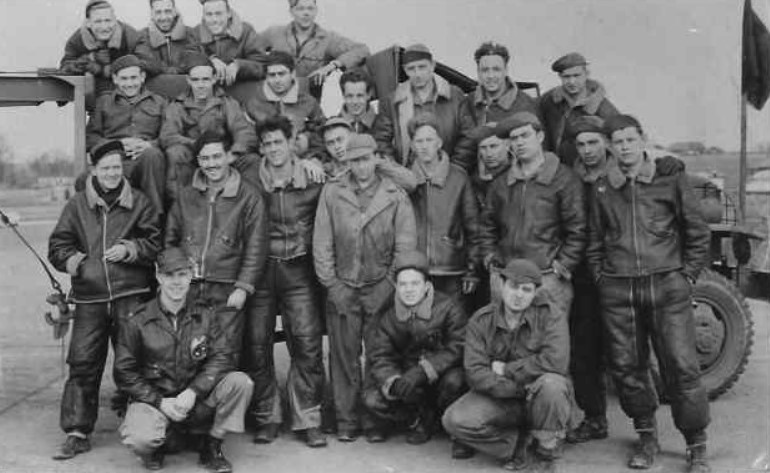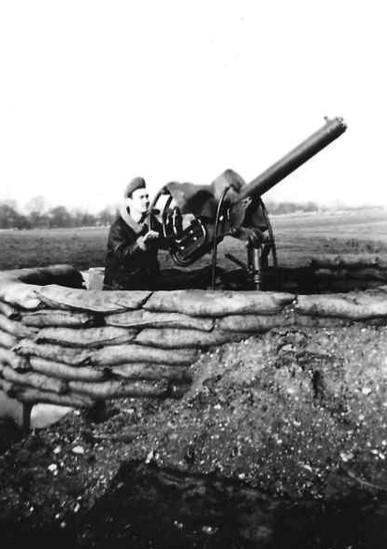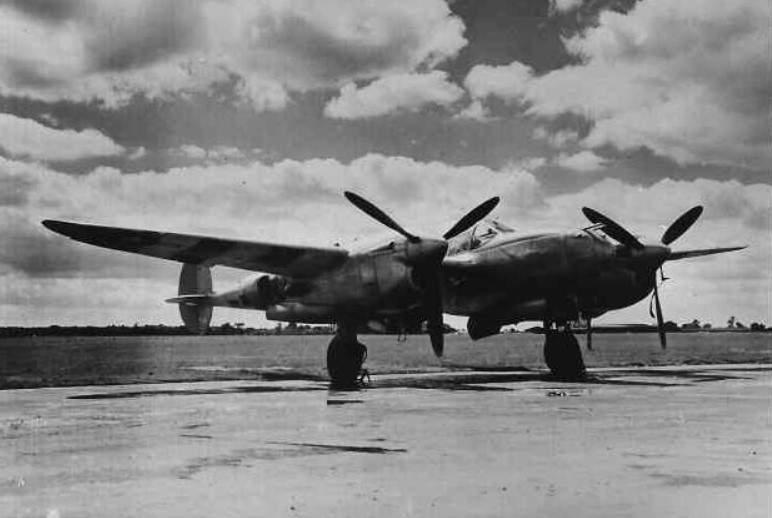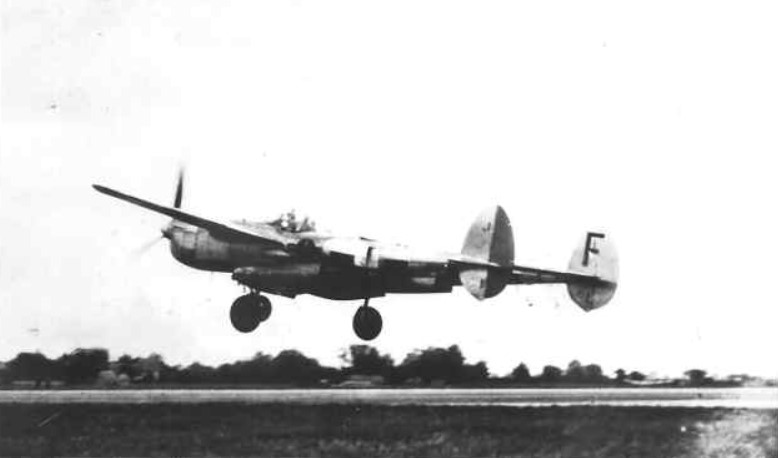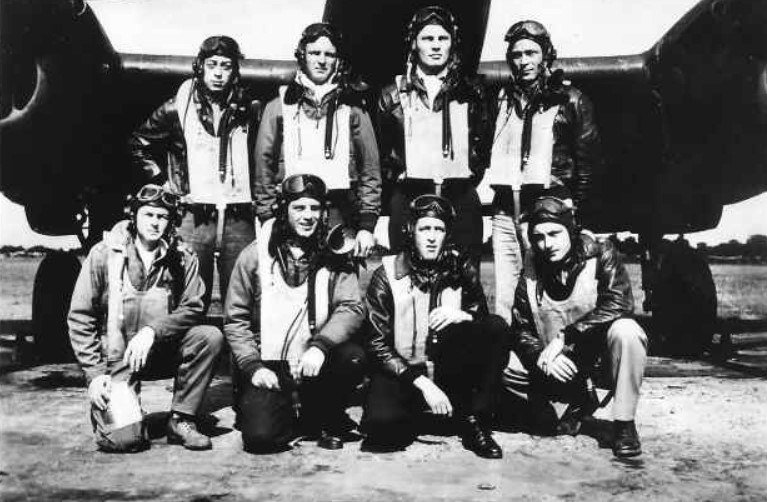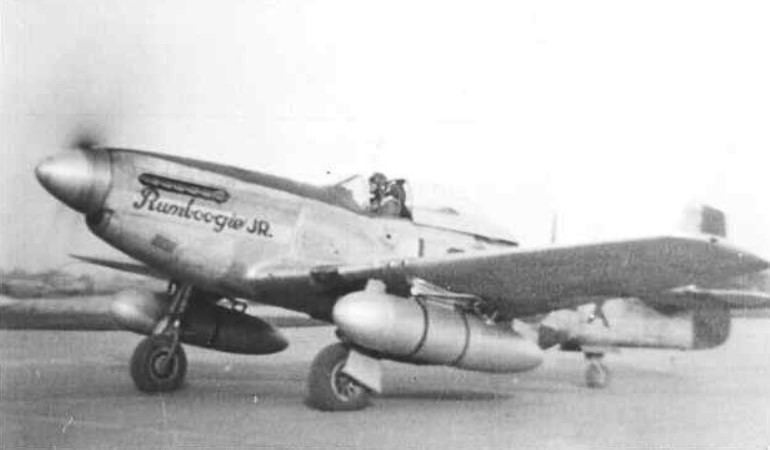In May 1942 American personnel began to arrive at RAF Wattisham. Construction of a concrete runway was started and new buildings were built ready for the arrival of heavy bombers. These never came and on 12th September 1942 the 12th AF arrived, 2 Squadrons of the 68th Observation Group equipped with P-39D Airacobras arrived, but by the December they had left for North Africa.
Wattisham was formally handed over to the USAAF on 8th May 1943, and the stars and stripes were raised outside HQ. Between 1942-1945 the base was a USAAF air depot, re-designated the 4th Strategic Air Depot. Their task was the maintenance of all 8th Air Force fighter aircraft. On the 15th May 1944 the 479th Fighter Group arrived under the 8th Air Force. It comprised of the 434th, 435th and 436th Fighter Squadrons. The Group was led by Lt. Col. Kyle L. Riddle and were known as “Riddle’s Raiders”. The Group’s primary mission was to escort daylight bomber formations to and from targets in Europe. Their secondary mission was to “seek and destroy”. These missions were flown at very low altitudes against targets such as, trains, goods yards, enemy troop concentrations, ammo dumps and enemy airfields etc.
They were initially equipped with the P-38J Lightning. In June, prior to the D-Day landings the P-38s were painted with black and white strips around the wings and tail booms in order to be recognized by allied gunners. Over the next few months many missions were flown, with the Group suffering a steady trickle of losses, mainly due to accidents. The group became very adept at strafing ground targets but had little success with air targets. This was to change on 29th July 1944 when Captain Arthur Jeffrey of the 434th Fighter Squadron made history. He was the first pilot to shoot down the rocket propelled Me.163 Komet aircraft.
On the 10th August 1944 during a ground strafing mission Lt. Col. Riddle was shot down. He managed to evade capture and finally made it back to England. On 12th August the Group came under the control of Col. Hubert Zemke, previously with the 56th Fighter Group. Only days after arriving he led the Group to its most successful ground-strafing raid so far, 43 aircraft destroyed, 28 damaged. During September 1944 the Group re-equipped with the P-51 Mustang. On 30th October 1944 while on a mission south-east of Hamburg Col. Zemke’s P-51 broke up in severe storms, he managed to bale out and was taken Prisoner of War.
On his return to England Lt. Col. Riddle acted as Zemke’s deputy and with Zemke a Prisoner of War, Riddle again became the Commanding Officer of the Group. On the 25th April 1945 the group flew it’s last mission escorting bombers from the 8th Air Force which was also flying it’s last mission.
During this mission First Lt. Hilton O Thompson gained the distinction of being credited with destroying the last German fighter, an AR.234 by an 8th Air Force pilot. Tragically First Lt. Hilton O Thompson was killed three months later, on 19th July 1945 whilst on a training mission over the channel. During the 11 months of combat the 479th Fighter Group flew 355 combat missions destroying 155 enemy aircraft in the air with 39 damaged, plus 279 aircraft destroyed on the ground with 168 damaged.
The group had four Fighter Aces, Arthur F. Jeffrey 434th FS with 14 aerial victories, Robin Olds 434th FS with 13 aerial victories, George W Gleason 434th FS with 12 aerial victories and Richard G Candelaria 435th FS with 6 aerial victories. The Group also earned two Distinguished Unit Citations, one for attacks on French airfields in August 1944 and the second for combat during a raid on Munster in the September. The 479th Fighter Group finally left Wattisham in November 1945 and deactivated at Kilmar, New Jersey in December 1945.
Wattisham was finally handed back to the RAF in January 1946.

